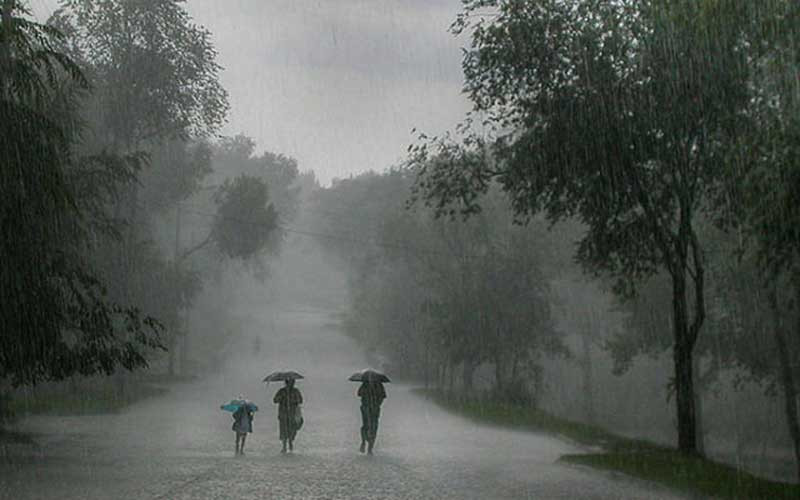
AFTER some weeks of torrential downpours in some parts of the country, a number of dams continue to surge leading to them spilling. In areas that have not been quite blessed with the gift of rains, the dams remain critically low.
In areas where dams have filled up and are already spilling, there has been new-found joy and celebrations because water being life, is such a precious commodity and a source for livelihood yesterday, today and tomorrow.
Of course, there is every reason for responsible communities to invest in more happiness, as the continued precipitation normally leads to good harvests and food security. Therefore, it is always every farmer’s goal to realise value in crop production, whether subsistence, small scale or large scale. The question that many people do not always ask is: “Are these dam spillages for real or they are just phoney.” These spillovers may, in the near future, also lead to massive and life-threatening flooding and destructive of property and infrastructure.
Such realisation of large catchments of water would be a co-benefit if vital national storage facilities like the Kariba Dam eventually fill up to the level of generating electricity.
This also applies to other strategic dams and reservoirs dotted around the country. While dams’ chances of filling up depends on the amount of rains that falls, two or three weeks of downpours may not be enough for the dams to achieve full capacity, unless there has been massive flooding in the country or some downpour of Cyclone Idai’s nature occurs.
Considering that this is early February and the rainfall season is midway, therefore, if the situation continues like this with more rains being received, where would the stored water go given that a number of these dams are already full?
It should also be realised that as the rains continue to pound the earth, it will not only be recharging the surface reservoirs, but the underground resources as well.
Looking at it from another viewpoint, the speed at which dams are filling up may be attributed to decades of gradual siltation and collection of sediments resulting from years of unsustainable human activities.
- Why we fall for disinformation
- Funding for researchers
- Unpacking environmental laws for real estate in Zimbabwe
- Veld fire management strategies for 2022
Keep Reading
These are deforestation, stream bank cultivation, wetland destruction, environmental degradation, artisanal mining practices in rivers and off-rivers, irresponsible use of natural resources by humans, shrinking of grazing spaces because of expansion of human settlements, brick moulding, sand and gravel harvesting, among others.
These celebrations are occurring in the context of low knowledge base for storage solutions, climate change, water acts, culture and security. During the early years of the natural resources department, water by-laws were extremely adhered to, with the 30-metre distance from the river or stream bank sufficiently guiding benchmarks which have since been forgotten, ignored and never talked about nowadays.
Artisanal mining, an environmental abscess, is taking place everywhere, in rivers and streams, thereby causing them to dry up and destroying their capacities to hold enough water, resulting into overflowing.
In many areas, artisanal mining is taking place in open spaces, leaving scars all over landscapes and when the rains come, they will sweep all the loose soil into streams, rivers and dams.
Degradation of the environment also leads to reduced groundwater levels, including the shrinking of forests and wetlands which has reduced water storage capacities.
When examining water issues, it is significant to visualise them using multiple and interdisciplinary lenses for sustainable water management systems.
This is because, water occupies a central position in the United Nations sustainable development goals (SDGs) and is linked directly or indirectly to all SDGs. The critical components of SDGs are Goal 6: Water, ensuring availability and sustainable management of water and sanitation; SDG 9: Building resilient infrastructure, promote inclusive and sustainable industrialisation to foster innovation; and SDG 13: Climate action, take urgent action to combat climate change and its impacts.
In short, the integration of these SDGs with the remaining ones would provide sustainable knowledge repositories on water management strategies, beginning with land surfaces, terrains, streams, rivers and finally the dams. It is a value-chain that should never be broken in order to avoid changing the natural water cycle. It is in the interest of water security and best practices for communities to understand multiple benefits resulting from successful implementation of SDGs for their own lives.
Due to the ongoing impacts of climate change, water storage solutions through rainwater harvesting is one other component of dealing with the stress-test for water security, not only in Zimbabwe but in Southern Africa as a whole.
As the demand for food surges and temperatures rise, the amount of water required for agricultural production is increasing significantly.
As a result, in some dams, water is being stolen and diverted into canals for small-scale community irrigation schemes, leading to lack of accountability and monitoring in the water sector.
It is also important to note that, large volumes of water are also required for huge hydro-power generation, especially in the absence of integrated renewable energy technologies, as a back-up facility.
While communities need water, they should realise that the scarcity of the commodity is a result of their own unsustainable behaviours.
Therefore, it is in the best interest of the country and their livelihood options that as communities celebrate the filling up of dams, they have a duty to harvest water when it would be still available.
A variety of rainwater harvesting techniques are critical and best storage solutions, especially in the context of climate change when very poor rainfall and record-high temperatures become prevalent.
Communities also need to realise that when dams get silted, it is expensive to remove sediments and silt from the water bodies, hence prevention is better than cure.
While it is good to situate water in terms of food security, the country always experiences storage gaps between supply and demand.
These are experienced in urban areas where, despite dams spilling, they are always reeling under water cuts and rationing.
Some high-density residential areas go for weeks without water in the context of the said plenty.
The country can construct as many dams as possible or a record number, but human activities need to be toned down, together with the realisation that climate change is real and no longer a story.
This includes the absence of current advanced water technologies and mechanisation, then we can as well forget about water security and its value chains.
In this regard, water supply management should be a key point to note in climate change mainstreaming.
Planners need to foreground adaptation and mitigation in their planning strategies because there is no water without forests and no forests without water.
In the context of climate change, storage gaps between supply and demand, lack of continuous education, communication and awareness, even when we celebrate, the joy should be commensurate with how we regulate our human behaviours and activities with regard to water management practices.











